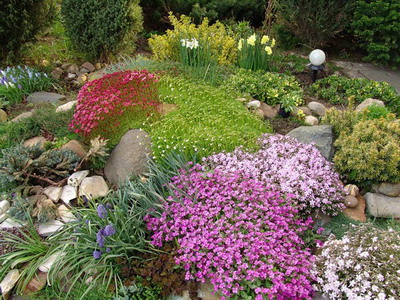Even the notorious six acres can be turned into a unique garden full of author’s ideas and original design finds. And all thanks to the various types of landscape flower beds that can be planted on the site. The most common types of flower beds are standard flower beds, borders and borders. More sophisticated growers arrange such varieties of flower beds as mixborders and rock gardens on the backyard territory.
Types of flower beds: flower beds, borders and borders
Flowerbeds – plots planted with flowers of one type of plant or several. These areas can be round, square, oval, rectangular, polygonal or figured, combining straight and rounded lines. This type of flower beds is very beautiful, sown with perennials that bloom at different times from spring to late autumn.
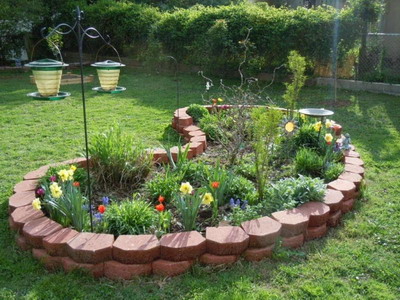
Rabatka – elongated even stripes of flowers with a width of 0.5 to 2 m. The length of the rabatka is arbitrary, but it should be more (3-4 times) than the width. They can be planted with plants of one variety or several varieties and species. If the rabatka is one-sided, then it is better to make it from mixed plantings of tall and low plants. Planted in rows, they look beautiful. You can also use tall and low plants in double-sided ridges. Here, tall flowers are placed in the middle, and the edges of the ridge are planted with undersized plants.
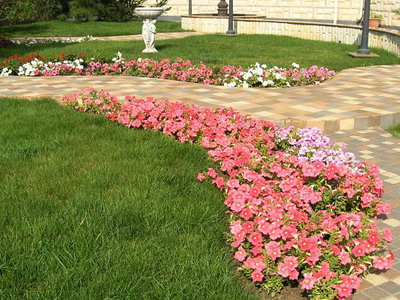
Borders are single-double-row strips of flower plants 30-50 cm wide, framing flower beds, flower beds, lawns, paths. For borders, low plants are used, which are selected depending on the main plantings. Borders are spring, summer and permanent.
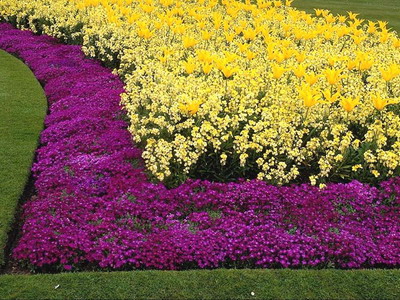
As you can see in the photo, this type of flower beds is suitable for plants with decorative foliage or herbaceous crops that beautifully frame flower beds and flowerbeds all season:

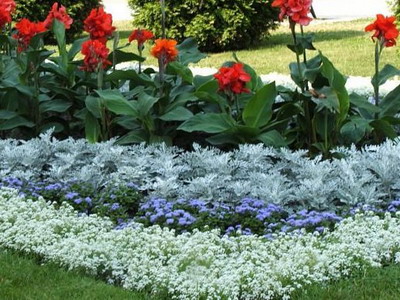
Varieties of flower beds: mixborders and tapeworms
What other flower beds are there in landscape design?
Mixborders are fairly wide strips (2-3 m), which are mixed borders or mixed borders. They are created from plants that bloom continuously from spring to autumn. This type of flower arrangement is more suitable for large summer cottages.
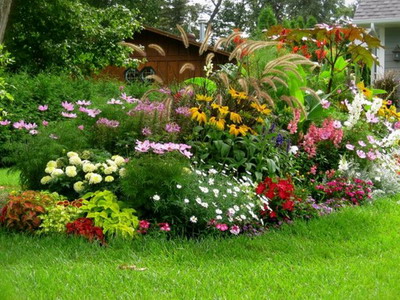
It must be remembered that it is impossible to plant light-loving and shade-tolerant, drought-resistant and moisture-loving plant species together in mixborders. In a mixborder, you can cut flowers for bouquets , while planting will not lose their decorative effect.
Groups are created from flowering plants on the lawn. Landings can be of an indefinite shape or in the form of regular figures (square, rhombus, etc.).
Such landings are especially beautiful in combination with decorative tiles.
Groups may consist of varieties of one or more species of perennials.

Homogeneous groups of early-flowering perennials, loosely arranged on the lawn, make an excellent impression. Homogeneous groups are also good from long-flowering plants (astilba, roses , etc.).
Tapeworms are plantings of single plants with a beautiful bush structure, flowering profusely, with decorative foliage. Good perennial specimens can be garden iris , delphinium , lupine, astilba, Chinese peony, royal geranium , echinacea, etc.
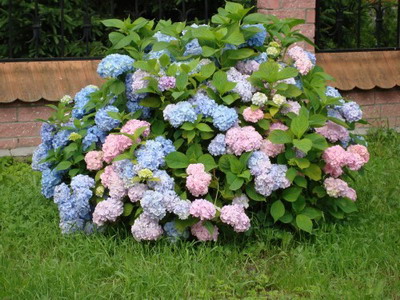
Types of flower beds: containers, vases and rock gardens
Containers and vases for flower decoration of houses, stairs, gates, balconies, etc. The shape and size of vases and containers may vary. As a rule, plants of only one species are planted in them.
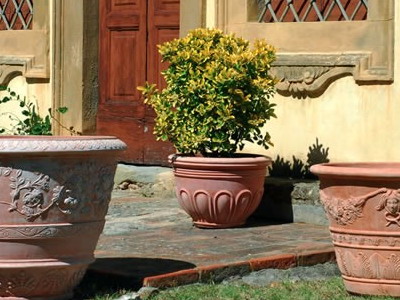
Rock garden (rockery) – a rocky garden or hill . It combines a number of elements of natural nature: stones, streams, small ponds and waterfalls, swamps. Slides can be oval, round, arched, ranging in size from 2 to 20 square meters. m, height from 0.5 to 1-1.5 m.

Pockets and cracks between stones are covered with specially prepared soil, where plants are planted. Many amateur gardeners arrange rocky slides. Even small in area, they are very effective, because they allow you to plant a large number of various plants , create interesting compositions.
It is necessary to have slides in a well-lit place, protected from the wind. They should be watered regularly, feed the plants and make sure that individual specimens, growing, do not oppress neighboring plants.
